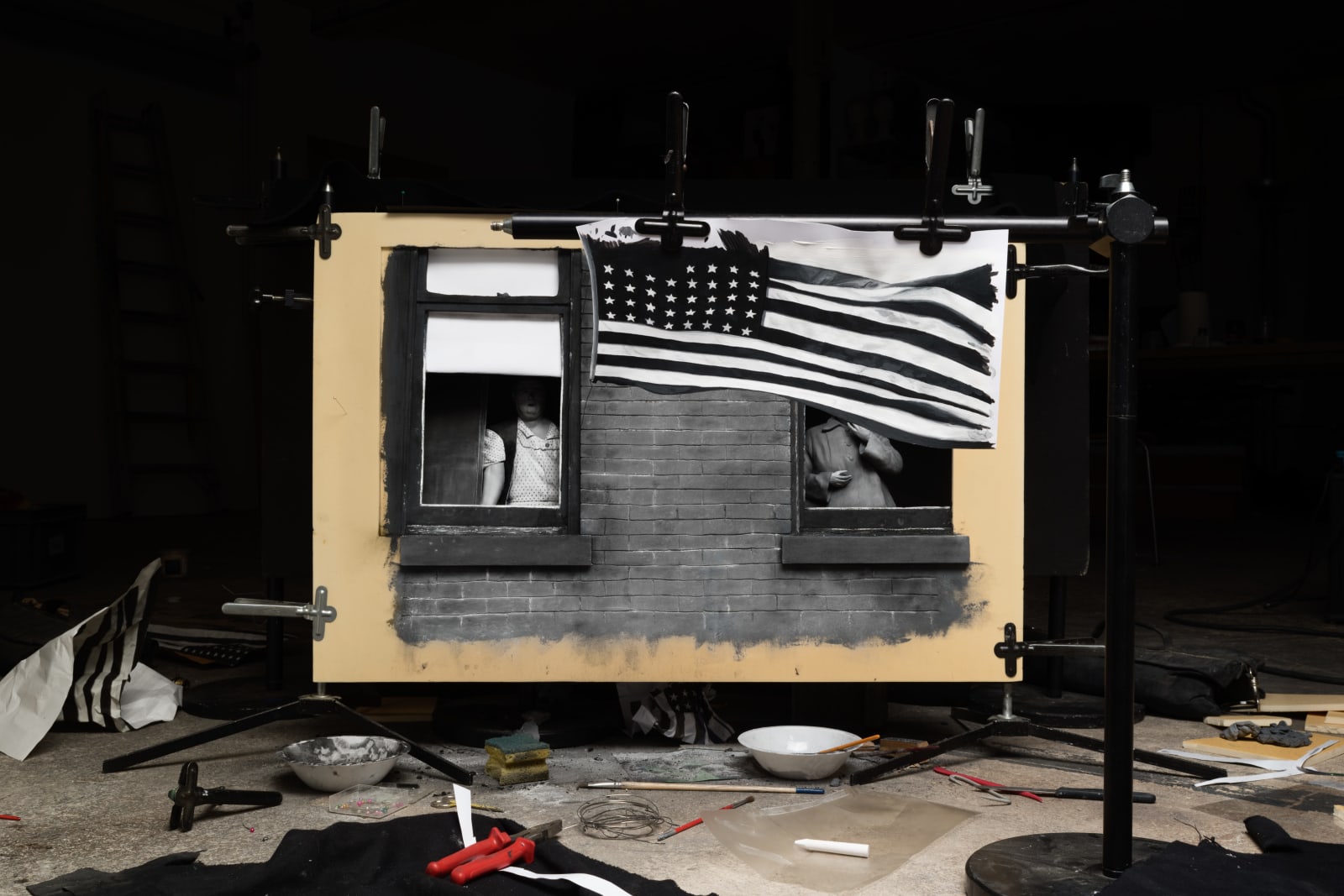 Behind the Scenes
Behind the Scenes
 Behind the Scenes
Behind the Scenes
Jojakim Cortis & Adrian Sonderegger
27 1/2 x 41 3/8 in
Further images
Robert Frank’s Parade, Hoboken, New Jersey, is one of the seminal photographs from his book The
Americans, and one that is immediately identified with its maker. The American flag is one of several
central motifs running through The Americans; its ubiquity was a source of deep interest to Frank, who
noted, ‘I liked the visual, graphic image of that flag, I think it’s a very good flag.’ Indeed, the stars-and-
stripes appears throughout the book in several signature images, suspended in mid-air at a Fourth of
July picnic, emerging from the bell of a tuba at a Chicago political rally, hanging between presidential
portraits on the wall of a Detroit bar, and elsewhere. In Frank’s handling, this highly-charged national
symbol appears as opaque or translucent, as a statement of national pride or simply as an accessory
to the pageantry of American politics.
Parade, Hoboken, New Jersey, was taken in March 1955 on the occasion of the city’s centennial. In it,
the faces of the two figures are obscured, one by shadow and the other by the flag itself. Of all of
Frank’s flag images, Parade is the most reflective of the decade that saw the intensification of the Cold
War and the McCarthy hearings. Frank’s dual status as an outsider—as an artist, and as a
European—gave him a unique vantage point from which to penetrate American culture and create an
image now regarded as one of the signature photographs of America made in the 20th century.
















